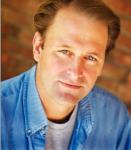
Looking for something to give to the cooks on your holiday shopping list? Here are some suggestions for books that will be equally welcomed by would-be, novice and experienced practitioners of the culinary arts. These books are far more than cookbooks that consist merely of a collection of recipes. They’re references useful to anyone with any level of experience in the kitchen.

The Elements of Cooking by Michael Ruhlman
“What does dredge mean?” a friend asked my husband, Peter, years ago when we were freshman at UIUC. (This was before Peter and I met). They’d discovered a common love of liver and onions, something that wasn’t included in the truly dreadful food served at our dorm. (I shudder to think what it would have tasted like if it had been on the dorm’s menu.) So they reserved the dorm’s kitchenette one night to make liver and onions for themselves. Peering at the recipe they’d somehow obtained, she said dubiously, “It says to dredge the liver in flour.”
“I don’t know what ‘dredge’ means,” replied Peter. “But I can only think of one thing you can do with liver and flour.”
Defining “dredge” and hundreds of other culinary terms is what Michael Ruhlman’s The Elements of Cooking is all about. The subtitle is “Translating the Chef’s Craft for Every Kitchen,” and that’s exactly what this slim volume does. It’s modeled on the classic English writing text, The Elements of Style, by Strunk and White. Just as that book is used as a musthave reference by writers and English students, The Elements of Cooking is a must-have reference for cooks of all levels.
Interpreting recipes can be one of the biggest stumbling blocks new or even experienced cooks can encounter. What does it mean to “sauté,” to “brown,” or to “butterfly”? What exactly is “caramelization,” how do you “fold” in ingredients, what’s a “slurry”? What’s the difference between “macerating” and “marinating”?
Ruhlman explains all this, and much, much more. I’ve been a Ruhlman fan ever since reading his first culinary book, The Making of a Chef: Mastering Heat at the Culinary Institute of America. He enrolled at the CIA, not to become a chef, but to write about the experience of going through America’s top culinary school (often called the culinary equivalent of Harvard). It’s entertaining and fascinating, something that’s my first recommendation as a must-read to anyone wanting to become a chef.
Since then, Ruhlman has gone on to pen other narratives about chefs going through the arduous trials to become official “Master Chefs” (The Soul of a Chef: the Pursuit of Perfection), as well as the world of television chef stars (The Reach of a Chef: Professional Cooking in the Age of Celebrity). He’s also coauthored cookbooks with some of America’s most renowned chefs, such as Thomas Keller of Napa Valley’s French Laundry and Eric Ripert of New York City’s Le Bernadin. It’s not an exaggeration to say that Ruhlman is currently America’s best, most respected food writer.
That said, I have to say that after buying The Elements of Cooking, I thought it was something I wouldn’t use much, even though I knew it would be beneficial for beginning cooks. After all, I know all those definitions